Search results for: 'bronze'
-
 Neolithic flint dagger from Denmark
Neolithic flint dagger from DenmarkDouble-edged blade and flat shaft made of beautiful flintstone. A status symbol from the transitional period between Late Neolithic and Early Bronze Age.
Price: on request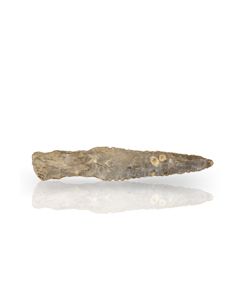 Neolithic flint dagger from Denmark
Neolithic flint dagger from DenmarkDouble-edged blade and flat shaft made of beautiful flintstone. A status symbol from the transitional period between Late Neolithic and Early Bronze Age.
€650 Neolithic flint dagger from Denmark
Neolithic flint dagger from DenmarkDouble-edged blade and flat shaft made of beautiful flintstone. A status symbol from the transitional period between Late Neolithic and Early Bronze Age.
€480 Flint blade and stone mould
Flint blade and stone mouldInteresting group of two artefacts. A Neolithic flint blade from Egypt and a Bronze Age mould for casting or hammering metal.
Price: on request Three arrow heads
Three arrow headsTwo bronze arrow heads from the 1st Millenium AD. One stone arrow head from the Neolithic.
Price: on request Neolithic sickle from Northern Germany
Neolithic sickle from Northern GermanyCrescent-shaped blade made of beautiful grey flint. This tool represents an intermediate state within the radical transition from Neolithic to Bronze Age.
Price: on request Neolithic sickle from Denmark
Neolithic sickle from DenmarkCrescent-shaped blade made of beautiful brown flint. This tool represents an intermediate state within the radical transition from Neolithic to Bronze Age.
€700 Neolithic flint sickle from Denmark
Neolithic flint sickle from DenmarkCrescent-shaped blade made of beautiful brown flintstone. This tool represents an intermediate state within the radical transition from Neolithic to Bronze Age.
€530 Neolithic flint sickle from Denmark
Neolithic flint sickle from DenmarkCrescent-shaped blade made of beautiful reddish-brown flintstone. This tool represents an intermediate state within the radical transition from Neolithic to Bronze Age.
€520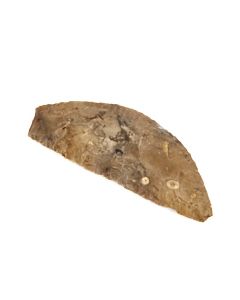 Neolithic sickle from Northern Germany
Neolithic sickle from Northern GermanySmall crescent-shaped blade made of beautiful grey flint. This tool represents an intermediate state within the radical transition from Neolithic to Bronze Age.
Price: on request Neolithic sickle from Northern Germany
Neolithic sickle from Northern GermanySmall crescent-shaped blade made of beautiful polychrome flint. This tool represents an intermediate state within the radical transition from Neolithic to Bronze Age.
Price: on request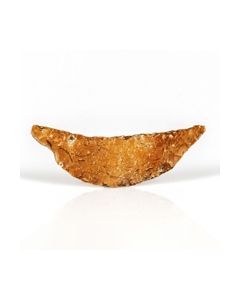 Small Neolithic sickle from Northern Germany
Small Neolithic sickle from Northern GermanyThe crescent-shaped blade is made of reddish brown flint. This tool represents an intermediate state within the radical transition from Neolithic to Bronze Age.
Price: on request Neolithic dagger blade from Denmark
Neolithic dagger blade from DenmarkDouble-edged, pointed blade made of beautiful flint. The blade was for a dagger, the typical status symbol from the transitional period between Late Neolithic and Early Bronze Age.
€480 Neolithic dagger blade from Denmark
Neolithic dagger blade from DenmarkDouble-edged, pointed blade made of beautiful flint. The blade was for a dagger, the typical status symbol from the transitional period between Late Neolithic and Early Bronze Age.
€470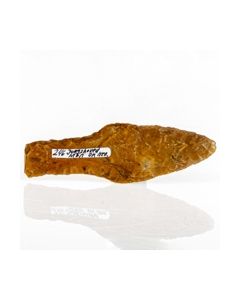 Scandinavian flint dagger
Scandinavian flint daggerNicely worked flint dagger from the transitional period between Late Neolithic and Early Bronze Age. Jungshoved on the Danish Island of Moen was the find spot.
Price: on request Beaker of the Bell Beaker culture
Beaker of the Bell Beaker cultureThe voluminous body has the typical shape of vessels from the Bell Beaker culture. It has been made during the transitioning period between Stone Age and Bronze Age.
Price: on request Neolithic axe head
Neolithic axe headFinely crafted tool from the New Stone Age of Europe. A specimen of the thin butted type.
Price: on request Neolithic axe head
Neolithic axe headFinely crafted tool from the New Stone Age of Europe. A specimen of the thick butted type.
Price: on request Neolithic axe head
Neolithic axe headFinely crafted tool made of nice dark grey flint. From the New Stone Age of Europe. A specimen of the thick butted type with thin blade.
Price: on request Neolithic axe head
Neolithic axe headNicely crafted tool made of beige stone. From the New Stone Age of Europe. A specimen of the thick butted type with thin blade.
€245 Neolithic axe head with through hole
Neolithic axe head with through holeFinely crafted tool from the New Stone Age of Europe. Made from greenish grey rock. With a through hole at the neck as a remarkable feature.
Price: on request Large neolithic axe head
Large neolithic axe headA tool from the Early Neolithic of Europe. Nicely polished and impressive by its size and weight.
Price: on request Restbestand - 283 Perlen aus dem Neolithikum zu stark reduziertem Preis
Restbestand - 283 Perlen aus dem Neolithikum zu stark reduziertem PreisIdeal für Gestaltung zu Ketten oder als Händlerlot geeignet. Ounjougou-Kultur, westliche Sahara. Ca. 5000 bis 3000 v.Chr, Neolithikum.
Price: on request Sonderangebot - 250 Perlen aus dem Neolithikum
Sonderangebot - 250 Perlen aus dem NeolithikumIdeal für eine lange Kette geeignet. Ounjougou-Kultur, westliche Sahara. Ca. 5000 bis 3000 v.Chr, Neolithikum.
Price: on request Beilkopf aus der Jungsteinzeit
Beilkopf aus der JungsteinzeitKlinge eines dünnblattigen Dicknackenbeils. Trapezförmiger Körper mit grob bearbeiteten Seiten. Ganggrabzeit bis Dolchzeit.
Price: on request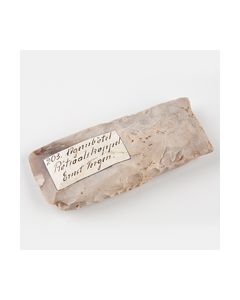 Flaches Rechteckbeil der Trichterbecherkultur
Flaches Rechteckbeil der TrichterbecherkulturAlle Seiten fein bearbeitet, jedoch nur die Schneide poliert. Flache, dünnnackige Klinge. Gefunden um 1900 in Negernbötel, Schleswig-Holstein.
Price: on request Axe head from neolithic Northern Europe
Axe head from neolithic Northern EuropeThe object is a trapezoid thick-butted thin bladed axe head dating to the Passage Grave Period to Dagger Period. 3200 to 1950 BC.
Price: on request Thick butted axe head made of beautiful flint
Thick butted axe head made of beautiful flintKlinge eines dünnblattigen Dicknackenbeils. Trapezförmiger Körper aus schönem Feuerstein in charakteristischem Braun. Ganggrabzeit bis Dolchzeit.
Price: on request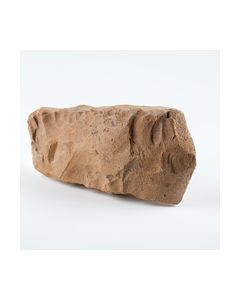 Coarsely worked thick butted axe
Coarsely worked thick butted axeKlinge eines dünnblattigen Dicknackenbeils. Leicht trapezförmiger Körper mit grober Bearbeitung. Der massive Beilkopf beeindruckt durch seine Größe. Ganggrabzeit bis Dolchzeit.
Price: on request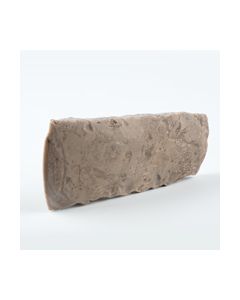 Nicely worked rectangular axe head
Nicely worked rectangular axe headDünnnackiger Beilkopf der Trichterbecherkultur, Dolmenzeit bis Ganggrabzeit. Beeindruckend durch die herausragend gute Erhaltung und den schönen, grauen Flint.
Price: on request Late neolithic axe head
Late neolithic axe headKlinge eines dünnblattigen Dicknackenbeils. Trapezförmiger Körper aus feinem grauen Flint. Ganggrabzeit bis Dolchzeit.
Price: on request Thin butted axe head from the Funnel Beaker culture
Thin butted axe head from the Funnel Beaker cultureHellgrauer bis dunkelgrauer Flint. Massiver Beilkopf, der durch Größe und Gewicht beeindruckt. Dolmenzeit bis Ganggrabzeit, 3900 bis 3000 v. Chr.
Price: on request Beilkopf für feine Arbeiten
Beilkopf für feine ArbeitenDicknackiger, kleiner Beilkopf aus schönem grauen Flint. Vermutlich für feine Arbeiten eingesetzt, z.B. zum Häuten. Ganggrabzeit bis Dolchzeit.
Price: on request Schmales Dicknackenbeil der Trichterbecherkultur
Schmales Dicknackenbeil der TrichterbecherkulturDer kleine und elegante Beilkopf beeindruckt durch seine gute Erhaltung und ausgewogenen Proportionen. In diesem Zustand absolut museumswürdig! Ganggrabzeit bis Dolchzeit.
Price: on request Kleines Trapezbeil der Trichterbecherkultur
Kleines Trapezbeil der TrichterbecherkulturKlinge eines kleinen Beils mit dünnem Nacken aus schönem grauen Flint. Vermutlich für feine Arbeiten eingesetzt, z.B. zum Häuten. Dolmenzeit bis Ganggrabzeit.
Price: on request Interessanter Beilkopf aus dem späten Neolithikum
Interessanter Beilkopf aus dem späten NeolithikumBemerkenswert ist die grobe Bearbeitung ohne Politur, möglicherweise handelt es sich um ein unfertiges Werkstück. Etwa 2800 bis 2300 v. Chr.
Price: on request

